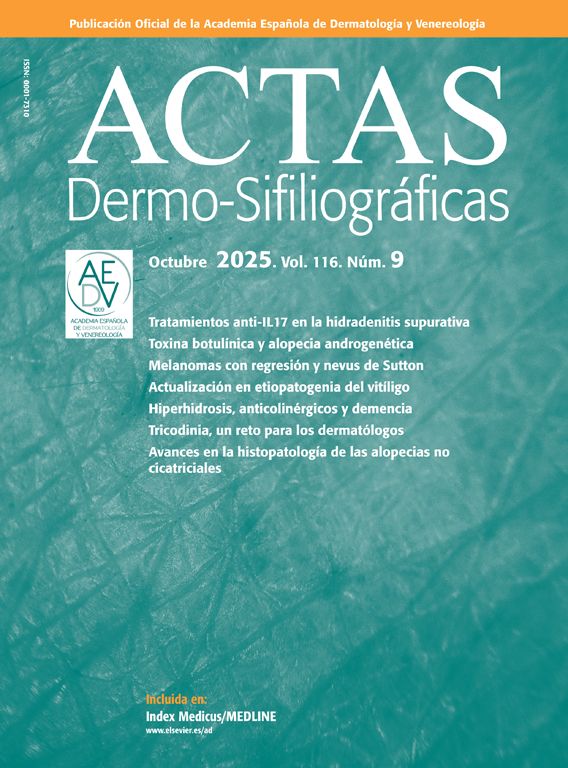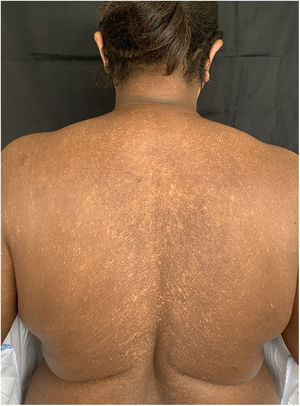A woman with Fitzpatrick skin type VI and no medical history, presented to dermatologic consult with multiple follicular, achromic and hypochromic macules located in the back (Fig. 1), some of theme confluent (Fig. 1). The lesions had a white fluorescence under Wood's light. The macules had appeared 3 months before and she had not received treatment. She denied relevant lesions in other parts of the body. On physical examination, some achromic perioral lesions and acral achromic macules located on both palms were noticed. A diagnosis of vitiligo ponctué was made. The patient was treated with narrowband UVB phototherapy and topical corticosteroids, showing an excellent response. Also known as leukoderma punctata, this entity may be secondary to treatment with phototherapy in some cases, while in other cases it is due to high activity of the disease, as in our patient. Besides, it raises the differential diagnosis of folliculotropic mycosis fungoides, a disorder that carries a worse prognosis. It's an opportunity to remember the importance of a complete examination, with a thorough physical exam and a rich anamnesis, and when doubt arrives, with a biopsy.
The Impact Factor measures the average number of citations received in a particular year by papers published in the journal during the two preceding years.
© Clarivate Analytics, Journal Citation Reports 2025
SRJ is a prestige metric based on the idea that not all citations are the same. SJR uses a similar algorithm as the Google page rank; it provides a quantitative and qualitative measure of the journal's impact.
See moreSNIP measures contextual citation impact by wighting citations based on the total number of citations in a subject field.
See more






